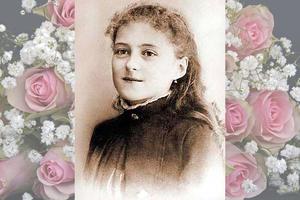Prayerful Attendance at Mass Is How We Give God Perfect and Proper Thanks
User’s Guide to Sunday, Oct. 9

Sunday, Oct. 9, is the 28th Sunday in Ordinary Time. Mass readings: 2 Kings 5:14-17; Psalm 98:1, 2-3, 3-4; 2 Timothy 2:8-13; Luke 17:11-19.
The question at the heart of today’s Gospel is best expressed in the Book of Psalms: “What return shall I make to the Lord for all the good he has done for me?” The same Psalm goes on to answer the question in this way: “The cup of salvation I will take up and call on the name of the Lord” (Psalm 116:12).
Indeed, how can I possibly thank the Lord for all the good he has done for me? Notice that the Psalm points to the Eucharist in saying, “The cup of salvation I will take up …” We cannot thank God our Father adequately, but Jesus can. In every Mass, through the priest, Jesus takes up the cup of salvation and shows it to us at every Mass. This is the perfect and superabundant thanks to the Father that only Jesus can offer. In every Mass, Jesus joins us to his perfect sacrifice of thanks. That is how we give thanks in a way commensurate with the manifold blessings we have received.
Today’s Gospel contains all the essential elements of Holy Mass. It is about giving thanks and reminds us once again that it is the Mass that is the perfect thanksgiving, the perfect “Eucharist.”
Let’s look and see how it is at Mass:
1. Gathering: Ten lepers (symbolizing us) have gathered, and Jesus comes near as he passes on his way. We do this in every Mass: We gather, and the Lord draws near. In the person of the priest, Jesus walks the aisle of our church just as he walked those ancient roads.
2. Kyrie: The lepers cry out for mercy, just as we do at every Mass. Lord, have mercy! Jesus, Master, have pity on us!
3. Liturgy of the Word: Jesus quotes Scripture and then applies it to their lives, just as he does for us at every Mass. In saying, “Go show yourselves to the priests,” Jesus is referencing Leviticus 13, which gives detailed instructions on how the priests of old were to diagnose leprosy or its having been cured. Yes, this is what we do at every Mass: We listen to the Lord Jesus, through the priest or deacon, proclaiming God’s word and then applying it to our lives.
4. Liturgy of the Eucharist: The Gospel relates that one of them “fell at the feet of Jesus and thanked him.” This is what we do during the Eucharistic Prayer: We kneel and thank Jesus, and along with him, we give thanks to the Father. As we have noted, the word “Eucharist” comes from the Greek and means “thanksgiving.” Here is the perfect thanks rendered to the Father. Those who claim that they can stay home and give adequate thanks to God should be rebuked for being prideful. Only Jesus can give perfect thanks to the Father, and we can only give adequate thanks by following Jesus’ command, “Do this in memory of me.” We have to be at Mass in order to do so.
5. Dismissal: Finally, Jesus sends the thankful leper on his way, saying, “Stand up and go; your faith has saved you.” We, too, are sent forth by Jesus at the end of every Mass, when he speaks through the priest or deacon: “The Mass is ended. Go in peace.”
So, there it is. Within this Gospel, which very clearly instructs us to give thanks to God, is the very structure of the Mass. If you want to give proper thanks to God, the right place to do it is at Mass. Only at Mass is perfect and proper thanks given to God.
- Keywords:
- msgr. charles pope
- giving thanks to god
- the mass
- eucharist
- user’s guide to sunday
- user's guide to sunday

















